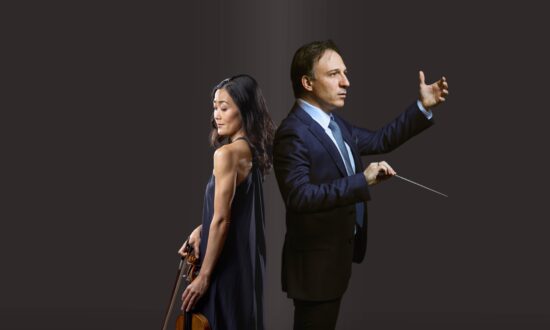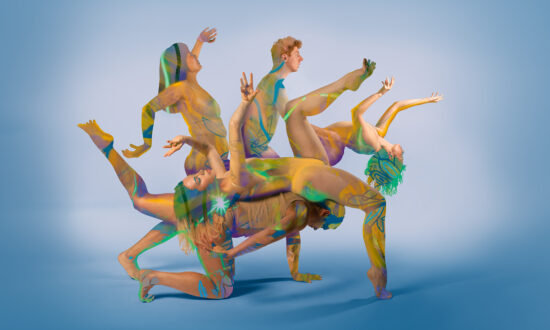The Piccadilly harks back to Hollywood’s golden age – a time when old-style glamour was embraced and going to the movies was a special occasion for which patrons frocked up in their finest attire.
Original owner Dan Clifford opened the art deco cinema in 1940, just a year after the release of Gone With the Wind and at the start of a decade that produced other enduring big-screen classics such as Citizen Kane, Casablanca, The Maltese Falcon, Gaslight and Meet Me in St Louis.
“They would have their double bill on a Saturday afternoon and people would get dressed up and come to the movies,” says Manda Flett, programming executive for current owner the Wallis Group, painting a picture of the Piccadilly’s early years.
“They would see one film, then they would go out and get refreshments before coming back in to watch a second one – that was their Saturday outing.
“We’ve got some fabulous photos of people all dressed up… and there was always an attendant in the ladies’ bathroom helping the ladies to powder their nose, with cabinets full of products they could purchase as well.”

The original interior of the single-screen Piccadilly Cinema. Photo: State Library / B-40920
Alongside an article about the opening of the new cinema in the October 22, 1940, edition of The News is a large display advertisement for the Piccadilly’s “Louis de Laine Ladies’ Powder Bar”, promising “The Beauty of YesterYear for Women of Today” with assistance from an attendant to help select your “individual shade”.
The adjacent story revealed that Hollywood actress Deanna Durbin would attend the following evening’s gala opening, with her latest film, First Love, selected as the star attraction for the cinema’s inaugural program. Other coming attractions would include the Spencer Tracy and Hedy Lamarr drama I Take This Woman.
It’s hard to imagine what the film-goers of yesteryear would have made of James Cameron’s 2022 big-budget, visual-effects-fuelled sci-fi epic Avatar: The Way of Water, which will be the big drawcard when the newly rejuvenated Piccadilly Cinema reopens to the public on December 15 after being closed since June last year.

A historic photo of the cinema with the original signage, which is being replicated as part of the current restoration.
Dan Clifford – who also built several other cinemas, including what is now the Capri – died just a couple of years after the Piccadilly opened and it went on to be sold to Greater Union and renamed The Forum. The Wallis family took it over in 1983, when Bob Wallis bought the building to save it from demolition.
Wallis brought back the Piccadilly name and in the 1990s converted the original single-screen cinema – which had capacity to seat around 1400 people over two levels – into a three-screen complex.
Flett explains that the recent restoration and rejuvenation – which cost more than $2 million – is the most extensive work undertaken since then, and was initiated by the family after the uncertainty the pandemic created in the film industry. They set out not just to renovate the building, but also to “reimagine” the Piccadilly as a unique venue offering different types of screenings and varied entertainment.
“The Wallis family have always seen themselves as custodians of the building – it means a lot to their family,” she says, speaking to InReview in what is today cinema one but was the balcony area of the original single-screen cinema.
“They saved it from being knocked down once before and they were determined to make sure it survived COVID and reopened to realise its full potential.”
A key element of the latest renovation, led by IA Design and Premier Building Solutions, has been the installation of two lifts – one providing access to cinemas one and two (which previously had only stair access) and the other to the mezzanine area.
Other major additions are a new food and drinks area and candy bar, with further works including the restoration of the original terrazzo flooring in the foyer area and other art deco features. A replica of the original “Piccadilly” sign on top of the building is also being created, but won’t be ready for the official reopening.

An artist’s impression of the new food and drinks area.
“The most important thing was accessibility and making sure that we took care of all the heritage details… doing the best that we could to stay as close as possible to the feel and the tone of the original art deco building,” Flett says.
The new licensed food and drinks lounge space is located where the old candy bar was on the O’Connell Street side of the building (which, pre-1980s, housed several small shopfronts). Although it was still largely under wraps when InReview visited this week, Flett says it will feature a mixture of seating – including plush booth seats – with an updated art-deco feel incorporating materials such as brass, timber and beautiful tiling.
This area is intended to “allow guests to have a full experience that isn’t just about sitting in a cinema”, while the new and extended candy bar and ticket-sales area will be completely separate.

An artist’s impression of the new candy bar and ticket booth area.
The original checkerboard terrazzo flooring was discovered in the foyer only after works began last year, having been carpeted over during the 1980s renovations.
“That was something that we weren’t expecting to find,” Flett says. “We had some people come and look at it and fairly quickly we determined we would be able to keep it so then it became a feature of the new foyer design.
“It was the same with the terrazzo skirting along the stairs that had been covered up with beige paint – that’s all been uncovered, too.”

Detail of the terrazzo skirting uncovered on the staircase. Photo: Tony Lewis
Another treasure the family has uncovered is the original 3m by 2.7m (10ft by 9ft) mural of Piccadilly Circus that had pride of place on the wall above the staircase when the cinema opened.
Dan Clifford’s inspiration for the building’s name came from both his association with the Adelaide Hills town of Piccadilly and London’s famous Piccadilly Circus. Building of the cinema began before the start of World War II, but the 1940 newspaper article accompanying its opening said the choice of name “was given added significance when world attention became focussed on Piccadilly Circus, one of the centres of London’s bombing raids”.

An old photo of the Piccadilly Circus mural before it was covered over.
Clifford commissioned a reproduction of English artist Millward Grey’s mural of Piccadilly Circus – compete with the statue of Eros, London buses and crowds – for his new building, but when Greater Union took over the cinema it was covered up by a picture of the Greek Forum.
“We weren’t sure what we were going to find when we took that down,” Flett says. “We knew it had been under there and we hoped it would still be okay and thankfully there was not a lot of damage… it is a beautiful original art deco mural.”
Adelaide-based Artlab Australia is currently restoring the mural, which will be revealed in the coming months.

The distinctive windows and staircase in the Piccadilly Cinema. Photo: Tony Lewis
Future programming at the Piccadilly following its reopening will include regular retrospectives, arthouse screenings and “event” presentations, in addition to new-release mainstream films. The restoration of a 35mm projector that has been in storage for more than a decade is central to this vision.
“There are a lot of 35mm prints in storage around the country, some with private collectors as well some with distributors, and so we will have access to a lot of content that will be very well suited to large, event-style screenings,” Flett says.
“We will be looking at doing some really amazing [director-based] retrospectives, as well as presenting more modern titles that maybe people didn’t realise had been done in 35mm.”
She says the cinema is also thinking outside the box in terms of collaborations with other arts organisations and festivals. It will host the film component of State Opera’s G&S Fest in May, welcome back the Adelaide Film Festival in October, and present a “programmers’ pick” mini film festival during Fringe.

Inside cinema one of the Piccadilly as it appears today. Photo: Tony Lewis
Wallis refers to the work undertaken over the past 18 months as “stage one renovations”, begging the question: What next?
While there is no timescale for further improvements, Flett says it intends to eventually update the seating in the cinemas downstairs and wants to transform cinema two into more of an intimate lounge-style cinema space along the lines of current trends being seen in the US and the UK.

Get InReview in your inbox – free each Saturday. Local arts and culture – covered.
Thanks for signing up to the InReview newsletter.
“We’re also still hopeful that we can make the building multi-purpose,” she adds, referring to an unsuccessful bid for support through the Federal Government’s RISE fund that would have enabled all three spaces to be adapted to host live events for two years.
“We’ve had every major arts organisation come through and have a look and say that they would definitely use the building if it became multi-purpose.”
As for the bathrooms, the Ladies’ Powder Bar and attendant may be long gone, but we’re pleased to report that the mezzanine-level ladies’ conveniences have been little touched by the latest works and retain their original styling, features and charm.

The mezzanine women’s bathroom, minus attendant. Photo: Tony Lewis
The Piccadilly Cinema will have a private gala reopening event on December 9, followed by a soft launch with several screenings on offer before it officially reopens to the public on December 15.
Support local arts journalism
Your support will help us continue the important work of InReview in publishing free professional journalism that celebrates, interrogates and amplifies arts and culture in South Australia.
Donate Here




